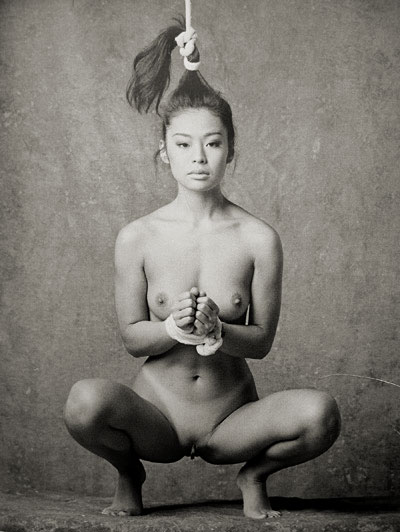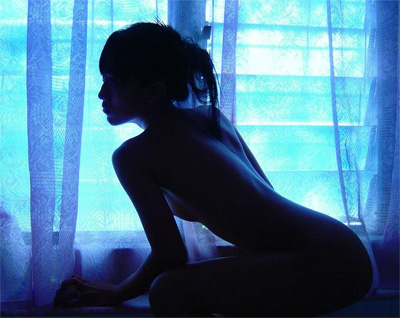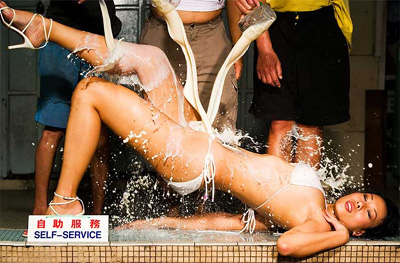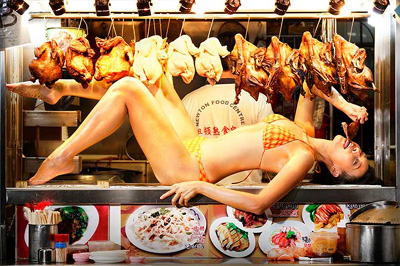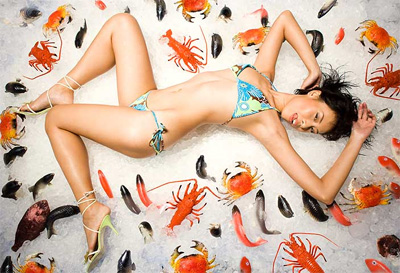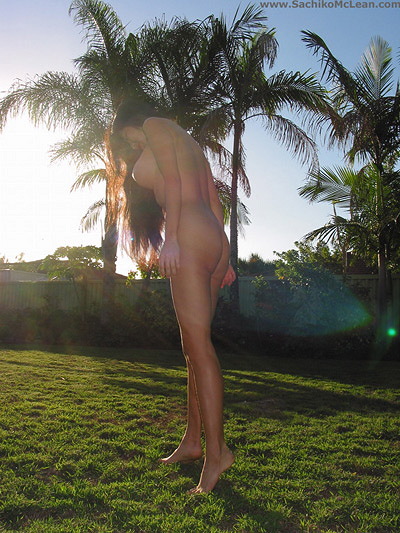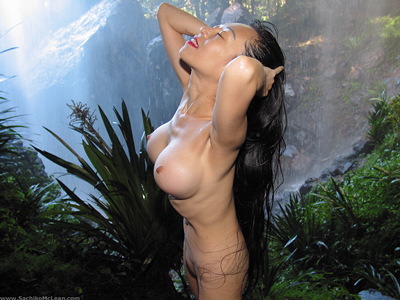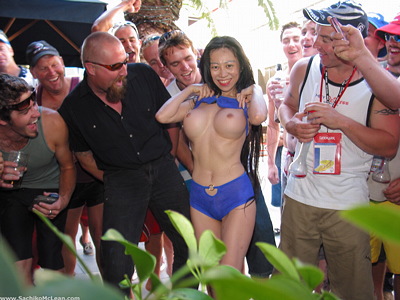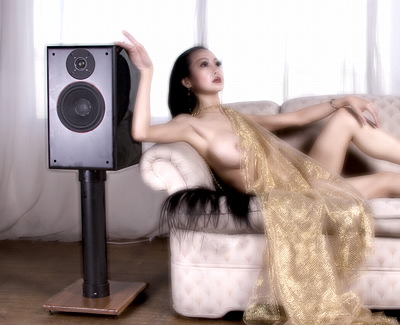
One of the most frequent and valued contributors to our fora here at Asian Sirens is Thailand-based photographer
n.e.w.works. So given that he does quite a bit of ‘arty’ glamour work, it only seemed right to profile him for our “10 questions for” series!
 Asian-Sirens:
Asian-Sirens: What kind of photography do you like?
n.e.w.works: To look at? All kinds of stuff, actually. Photojournalism, still-lifes and abstracts, nudes, and even good porn all interest me as a both a viewer and a photographer. Images in and of themselves are among the most powerful statements that we humans create, and so in that sense, I like all of it.
As for photography that I admire, I would have to say that the photographs that impress me the most are ones that leave me asking myself: “how did they do that?” It might be some really cool lighting in a fashion or nude photo, or some outrageously in-your-face photojournalism from a war-zone or sporting event, or even something as mundane as a candid shot that just captures the feeling of a place or time or an expression on a person’s face. Of course, as I have matured as a photographer, I have learned more about techniques, etc. and so naturally I now look at photos with a more knowledgeable and maybe critical eye. But there will always be shooters out there doing amazing stuff that will leave me stunned and dumbfounded, and that’s great!
Asian-Sirens: When did you decide to become a photographer?
n.e.w.works: Hmmmm… It was a process. For years I played around with random cameras that I got my hands on without ever really feeling “serious” about it or thinking about it much. I have a good friend and former roommate who some years ago was studying photography at the SF Art Institute, and watching him originally planted the seed in my brain.
It was another couple of years before I decided to get serious about it. I was living in Japan at the time and taking more and more photos of all kinds during the first year or two there and just knew that I loved it and wanted to get better at it and then maybe, who knows, right? I knew that, technically, I had a lot to learn and I didn’t think that I could get it from a book. I was working and I knew that it would be really tough to be an assistant for a pro photographer while working full-time (not to mention that i was too old for it and not japanese!), so I decided to go to photography school. I attended night school at the Nippon Photographic Institute in Shibuya for 2 years in the fashion/portraiture department. It was a great experience with a lot of great teachers and classmates and definitely took my photography to another level. After that I spent a couple of years doing freelance stuff in Tokyo before coming back here to Thailand, where I am now and have lived before when I was in high-school/college…
Asian-Sirens: Which photographers do you admire and why?
n.e.w.works: Whoa, that’s a tough one. There are so many! For glamour/nude stuff, I would have to say that there are a TON of great Japanese shooters out there, and I’m not just saying that because I lived there for 8 years! No, actually I am… I have definitely been influenced by several of them individually, and by the whole Japanese “shashinshuu” (literally translated: “collection of photographs”) narrative approach to photographing women, with or without clothes on. Kishin Shinoyama (subtle and brilliant!), Nobuo Araki (although he’s not so easily pigeon-holed as strictly nude stuff; his still-lifes and other stuff are awesome, too), and a friend of mine named Minoru Suwa (try googling him) immediately come to mind. Oh, and this one guy who actually has his own magazine that comes out monthly and is even on the racks at 7/11 stores in Japan (!!!) named Meisa Fujishiro is great too. For non-Japanese glamour and/or nude stuff, most definitely Adam Yurman (whom I discovered through asian-sirens.com!), a very controversial American guy named Jock Sturges, and another American guy named Richard Kern. There are two shooters here in Thailand whose work I like very much, too. One is a European guy who goes by the name “Shrimp”, and the other is a Thai guy named Chartchai Meebamroong whose work I have seen in a couple of magazines here. If you look at all these guys’ work, they’re great not just because they are technically excellent (which they all are, very!); they also all have their own very distinctive styles and are able to convey a mood, a feeling. And they have great taste in (and access to) models! You see their work and know that it’s them without seeing the name. All these guys inspire me.
For non-girlie-related (mostly!) photographers, I’ll just throw out a few names of people whose work leaves me at a loss for words, and if readers are interested, they can go googling: David LaChapelle (you have to see his work! unreal!), Annie Liebovitz (one of Rolling Stone Magazine’s original shooters and quite possibly the greatest portrait photographer ever), Sebastiao Salgado (very, very gifted photojournalist), and last but not least, the legendary Vietnam war photographer Tim Page…
Asian-Sirens: What makes a good photo?
n.e.w.works: One that succeeds in communicating something to the viewer, regardless of the genre.
Asian-Sirens: What makes a good model?
n.e.w.works: It depends on what you are using the model for. Fashion is about the clothes; glamour/nude photography is about the girl herself. But for me, besides being photogenic (which is not always the same as being “beautiful”), a good model is one that has something unique, beautiful, or striking that I can work with through the lens and who gives me what I want to see. Communication between me and the model is very important. If there isn’t a comfort-level between photographer and model, it will show. In the past I have found that the more shoots I do with a particular girl, the better the product becomes.
Asian-Sirens: Is there an Asian model you really would like to work with?
n.e.w.works: Oh, yes! For ones that are still actively working, I would say Natt Ketsarin (Thai), Kadena Reon (J-girl), and that gorgeous Chinese actress who was in the latest “Mission Impossible”, Maggie Q!
Asian-Sirens: Did you ever screw up an assignment? (please do elaborate if so! ;-))
n.e.w.works: Yes. It was one of my first freelance jobs, and I was supposed to take a bunch of shots of different guys’ hairstyles for a salon in Tokyo. I think that nervousness + the subject matter being totally uninspiring were the cause. Anyway, I measured the light wrong (this was pre-digital era) and got 3 rolls of very overexposed film, which I spent several hours in the darkroom and a bunch of money to finally make useable. It was a learning experience, especially because I spent so much money to get the prints usable that I ended up losing money on the job instead of making it!
Asian-Sirens: Did you ever get intimate with a model you worked with? (feel free to elaborate! ;-))
n.e.w.works: Without getting into too much detail… yes. However, recently I think that it’s better to keep photos photos and personal personal, mainly because when they get mixed together, they can get in each other’s way.
Asian-Sirens: What kind of camera and lighting equipment do you use?
n.e.w.works: If you look at my website, you will find a lot of pre-digital stuff where I used a variety of cameras: Pentax 67, Mamiya RZ, Canon EOS 1V, Contax T2, and others. Since I have gone digital I only use Canon equipment; they are by far tops in digital SLRs, and I can use the Canon lenses that I already owned. My two main cameras now are a Canon EOS 5D and Canon S80 compact and I love them both dearly, although I must say that I miss the weight of the Mamiya in my hand and selling the 1V recently was a bit of a sad occasion!
If I am in a studio, I will use whatever they have that I need to in order to get the right feel; usually nothing overly fancy. I very much admire a lot of pros who can concoct very elaborate lighting and make it work seamlessly, but I am more inclined to keep it simple if I can in the studio. Speaking of simplicity, one great tool for portraiture of all types is a ring-flash. It can do the job of much more complicated lighting schemes, and is cheap and fits in your camera bag. Very versatile…
Asian-Sirens: What are your future ambitions as a photographer?
n.e.w.works: Technically, I would like to get to the same point digitally that I have been before in the darkroom. In other words, to feel as comfortable and be as proficient using stuff like Photoshop as I felt a couple of years ago processing film and printing. They are such different beasts on the surface and yet in the end they are really both just means to an end, which is creating the image that you want to create. I see people here and there on the web crowing about how they never alter their photos blah blah blah, but so much of the stuff that you can do with color correction, cropping, contrast and brightness, etc, in Photoshop is nothing that you couldn’t do in the darkroom with the requisite know-how. Use the tools that are available to you.
Career-wise, I think that I have done my time as far as working as a shoot-anything-for-money freelance photographer. I have decided that from here on out I would rather pursue it for myself and “shoot what I wanna shoot”, even while doing something else for money, than try to make a living with my camera at all costs. I believe that if I keep shooting what inspires me and the timing is right, sometime down the road I will be able to make an impact with the work that I want to do and perhaps do it full-time again. Until then, I am just going for it and doing other things besides photography as well. Hope springs eternal for the frustrated artist!
Asian-Sirens: Thanks for your time n.e.w.works – and don’t forget to check out his web site!


